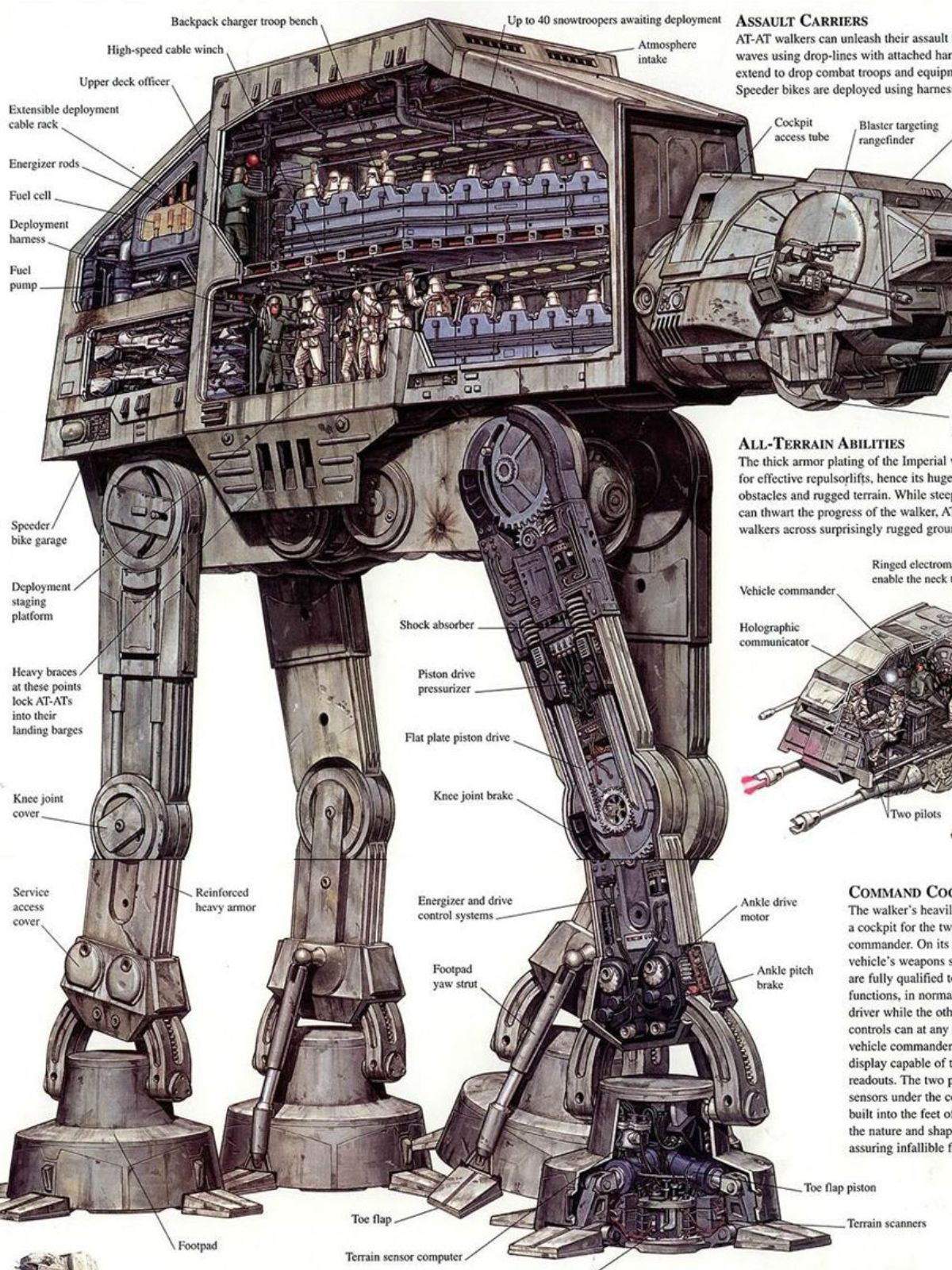When the First Order rolled up to Crait in The Last Jedi, we immediately recognized the return of those iconic Imperial-style walkers—but this time, something felt different. Towering over the classic AT-ATs was a new mechanical beast: the AT-M6, short for All Terrain Megacaliber Six.
So was it actually more effective? That really depends on what we mean by “effective.” The AT-M6 definitely packed more firepower, but it wasn’t built to do the same job as the AT-AT. One served as a mobile artillery platform. The other was designed for moving troops into battle.
Let’s break down the differences—and see just how much of an upgrade the AT-M6 really was.
The AT-M6 Was Built Bigger and Stronger Than the AT-AT
Right away, we can see the size difference. The AT-M6 absolutely dwarfs the classic AT-AT—not just in height, but in overall mass and presence. The AT-AT stood at about 22.5 meters tall, but the AT-M6 measures in at a massive 36.18 meters high, 40.87 meters long, and 17.95 meters wide. It’s easily one of the largest walkers ever deployed in ground combat.
It was operated by a full crew consisting of a pilot, gunner, vehicle commander, and two weapon engineers, with room for up to twelve passengers only. That limited capacity shows it wasn’t built for troop transport. Instead, the AT-M6 was clearly designed for firepower and battlefield control. Its main armament was the massive MegaCaliber Six turbolaser cannon, supported by two heavy fire-linked dual laser cannons and two medium anti-ship laser cannons. This wasn’t just a bigger walker—it was a walking artillery platform, purpose-built to hammer through enemy lines and serve as the backbone of the First Order’s ground assault.

Structurally, the entire frame of the AT-M6 was built around housing the MegaCaliber Six turbolaser, a weapon powerful enough to punch through planetary shields and end sieges in a single strike. To support such firepower, the walker carried a dedicated fusion reactor and several auxiliary fuel cells mounted behind the cannon to speed up its recharge time between shots.
The walker also came reinforced with Ultra-dense matrixed composite armor, making it incredibly hard to take down. Its front legs featured serrated cable cutters—a direct counter to the infamous Hoth-style takedown tactics used against AT-ATs. And with a targeting computer linked to dual cockpit-mounted sensor banks, the AT-M6 could deliver pinpoint precision strikes even while in motion.
AT-ATs Were Built for Efficiency, Not Just Firepower
To be honest, when we’re comparing the AT-AT and the AT-M6, sure—you could argue that the AT-M6 carries heavier firepower. But if we’re talking about what’s most effective in actual combat, I have to give it to the AT-AT.
The first point—and honestly, the strongest one—comes down to troop capacity. If we’re measuring combat effectiveness by how many soldiers a walker can bring into the fight, the AT-AT wins without question. As mentioned earlier, the AT-M6 can carry only 12 passengers. That’s barely a squad. Meanwhile, the AT-AT can carry up to 40 fully armed stormtroopers, ready to deploy straight into the battlefield.
And that’s just the troop count. Inside the AT-AT, you’ve also got a crew made up of a pilot, co-pilot/gunner, commander, and two deck officers, along with three mini-crew members responsible for managing systems and troop deployment. That brings the total to around 48 personnel onboard when fully loaded. And on top of all that, the AT-AT could also store and deploy up to four 74-Z speeder bikes for scout troopers. That meant it could support flanking missions, forward recon, or rapid response — all without needing additional transport. That kind of capacity made the AT-AT a true ground assault transport, capable of leading large-scale offensives and establishing presence in a way the AT-M6 just couldn’t match. That kind of capacity made the AT-AT a true ground assault transport, capable of leading large-scale offensives and establishing presence in a way the AT-M6 just couldn’t match.

Another major factor in combat effectiveness is resource consumption—and this is where the AT-AT shines. The AT-M6 needed a dedicated power generator and multiple auxiliary fuel cells just to power its MegaCaliber Six cannon. That’s a lot of energy for one weapon, and it meant more fuel, more maintenance, and more logistical support just to keep it operational during a battle.
The AT-AT, by comparison, ran on a simpler and more efficient power system. It didn’t need an external reactor or specialized cells. You could deploy it for extended missions without worrying about draining energy reserves or needing constant refueling. You could keep AT-ATs rolling across terrain for days. The AT-M6 might hit harder in a single strike, but it burned through resources faster—and that matters when you’re stretched thin across a galactic war.

